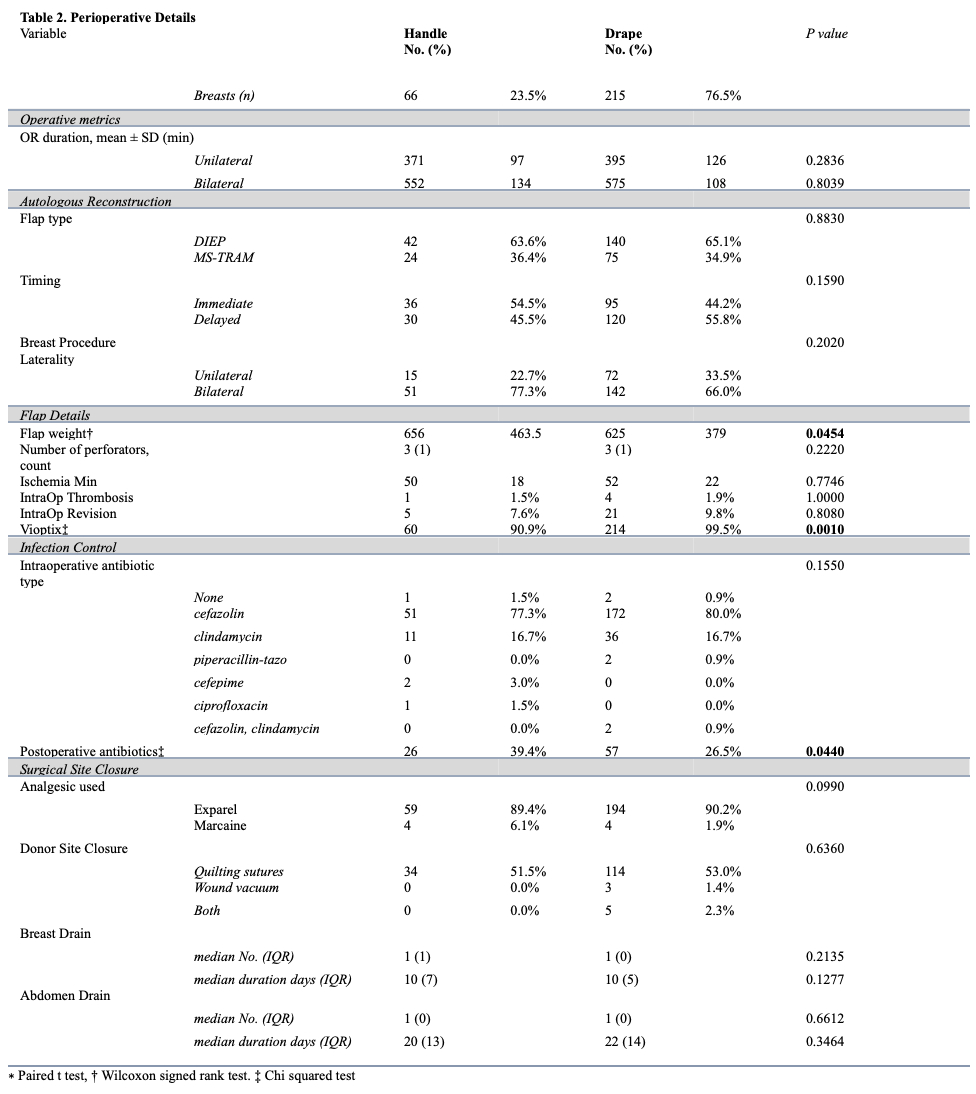Sterile Draping of Operative Microscopes in Breast Free Flaps: Are We Covering Up Ineffective
Julian K. Marable*1, Daisy L. Spoer2, Varsha Harish1, Lauren E. Berger2, Samuel S. Huffman2, Paige Dekker3, David H. Song2, Kenneth L. Fan2
1Georgetown University School of Medicine, Washington, ; 2Department of Plastic and Reconstructive Surgery, MedStar Georgetown University Hospital, Washington, ; 3Division of Plastic and Reconstructive Surgery, University of Southern California Keck School of Medicine, Los Angeles, CA
In microsurgical procedures, the proper sterile technique involves draping the entire operating microscope with single-use plastic to theoretically prevent infection. Alternatively, sterile wrapping of microscope handles would reduce operating room waste and provide a more cost-effective and environmentally sustainable approach to sterility. This study aimed to determine whether the draping technique used during abdominally-based free flaps influenced the rate of surgical site infections.
We conducted a retrospective review of abdominally-based free flaps (Ab-FF) performed consecutively between March 2017 and August 2022. Patient demographics, comorbidities, perioperative data, and postoperative complications were collected. The primary outcomes included postoperative surgical site infections and environmental impact.
Of the 281 breasts reconstructed with Ab-FF identified, operating microscopes were sterilely covered with microscope drapes (n=215) or handle covers (n=66) composed of polyethylene-based plastic. Overall, surgical site infections (SSI) occurred in 9.3% of cases (n=26) with heterogeneous pathogens involved. The short-term infectious complications did not differ according to the sterile technique used, and both methods conferred statistically similar infection rates concerning location and severity. In controlling for the statistical differences between groups with multivariate analysis, radiation was the only independent predictor of postoperative infection, while reconstruction bilaterality and neoadjuvant chemotherapy were independently protective. Replacing a microscope drape with a handle reduces carbon emissions by 1276 grams of CO2 and direct costs by .84 per item (p < 0.0001).
The results of this study suggest that plastic draping and handle wrapping of operative microscopes are associated with equivalent SSI rates after Ab-FF. Thus, limiting the sterile plastic wrapping to microscope handles may be a cost-effective and environmentally sustainable approach to performing sterile microsurgery without conferring an additional risk of infection.



Back to 2023 Posters


